Rob Bignell's Blog, page 329
July 8, 2014
Australian editing client publishes debut novel
A recent 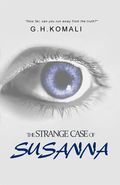 editing client of mine has published her first novel, “The Strange Case of Susanna: A Horror Mystery.” Australian G.H. Komali’s book tells the tale of a young woman named Clara, who as a foster care provider takes in eleven year-old Susanna, whose entire family died a suspicious fire. Just when Clara thinks things are going well, Susanna begins suffering severe mood swings and starts talking to an invisible entity. Then a shocking incident sends Clara into a devastating downward spiral, threatening her own existence. Clara’s only hope lies in uncovering the terrifying truth about Susanna. The ebook early Sunday afternoon was in Amazon.com’s top 50 bestseller list for Mystery, Thriller & Suspense > Ghosts. It is available for purchase online.
editing client of mine has published her first novel, “The Strange Case of Susanna: A Horror Mystery.” Australian G.H. Komali’s book tells the tale of a young woman named Clara, who as a foster care provider takes in eleven year-old Susanna, whose entire family died a suspicious fire. Just when Clara thinks things are going well, Susanna begins suffering severe mood swings and starts talking to an invisible entity. Then a shocking incident sends Clara into a devastating downward spiral, threatening her own existence. Clara’s only hope lies in uncovering the terrifying truth about Susanna. The ebook early Sunday afternoon was in Amazon.com’s top 50 bestseller list for Mystery, Thriller & Suspense > Ghosts. It is available for purchase online.
Need an editor? Having your book, business document or academic paper proofread or edited before submitting it can prove invaluable. In an economic climate where you face heavy competition, your writing needs a second eye to give you the edge. Whether you come from a big city like Washington, D.C., or a small town like Truth or Consequences, New Mexico, I can provide that second eye.
<A HREF="http://ws-na.amazon-adsystem.com/widg... Widgets</A>Related articles
 Editing client publishes dystopian novel
Editing client publishes dystopian novel Former colleague publishes her first book
Former colleague publishes her first book Don't let characters chew the furniture
Don't let characters chew the furniture Draw attention to book via article directories
Draw attention to book via article directories Five Great Quotations about Business of Writing
Five Great Quotations about Business of Writing
July 7, 2014
Plot story using dramatic throughlines
When plotting 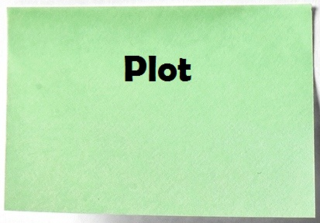 out your story, one useful way of doing so is thinking about in terms of dramatic throughlines.
out your story, one useful way of doing so is thinking about in terms of dramatic throughlines.
Dramatic throughlines are what happens to a character in a story. Generally, the story ought to be about a character solving a problem, such as a diamond smuggling rings needs to be broken or a hill must be taken from the enemy during a war. In the diamond smuggling story, the main character’s throughlines might include infiltrating the smuggling ring and surviving an attempt on his life by the boss who suspects him of being a cop. In the war story, the main character’s dramatic throughlines might include storming the hill under heavy fire and fighting in secret tunnels. The events in the throughline should grow increasingly more difficult for the main character to overcome and so the story’s tension will rise.
Sometimes the main character is forced to make a difficult choice so that he can overcome a problem. For example, our cop might decide to sacrifice some crook he’s befriended in the organization so he can kill the boss. Our solider might have to rescue an injured comrade while under fire and in doing so clears a machine gun nest that allows his platoon to gain the upper hand in the battle. This difficult choice is made in the story’s climax.
The throughlines end with the climax, though afterward the author often shows the main character receiving some award for resolving the problem. For instance, the cop might get the girl, and the soldier might receive the recognition he always has sought from his fellow troops.
Need an editor? Having your book, business document or academic paper proofread or edited before submitting it can prove invaluable. In an economic climate where you face heavy competition, your writing needs a second eye to give you the edge. Whether you come from a big city like Boston, Massachusetts, or a small town like Boston, Georgia, I can provide that second eye.
<A HREF="http://ws-na.amazon-adsystem.com/widg... Widgets</A>
Related articles
 Write your story's penultimate scene
Write your story's penultimate scene Maintain sense of tension through pace
Maintain sense of tension through pace
July 6, 2014
Five Great Quotations about Business of Writing
“Writing is 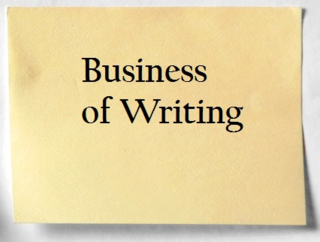 the only profession where no one considers you ridiculous if you earn no money.” - Jules Renard
the only profession where no one considers you ridiculous if you earn no money.” - Jules Renard
“The only reason for being a professional writer is that you just can't help it. - Leo Rosten
...it will not always happen that the success of a poet is proportionate to his labor.” - Samuel Johnson
“Don't sell yourself short; dare to dream. You might sell to a top market before you ever sell to a non-paying market - you won't know unless you try. In the same way, it's good to be cooperative, but don't be too humble either.” - Rheal Nadeau
“Writing is not a profession but a vocation of unhappiness.” - Georges Simenon
Need an editor? Having your book, business document or academic paper proofread or edited before submitting it can prove invaluable. In an economic climate where you face heavy competition, your writing needs a second eye to give you the edge. Whether you hail from a big city like San Antonio or a small town like Cloverdale, Oregon, I can provide that second eye.
<A HREF="http://ws-na.amazon-adsystem.com/widg... Widgets</A>Related articles
 Five quotations about the business of writing
Five quotations about the business of writing Five Great Quotations about Readers
Five Great Quotations about Readers Five great quotations for aspiring writers
Five great quotations for aspiring writers Use consistent quotation mark, apostrophe style
Use consistent quotation mark, apostrophe style Place commas inside quotation marks
Place commas inside quotation marks
July 5, 2014
Don’t let characters chew the furniture
Among the 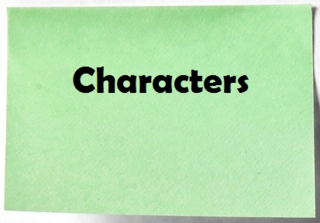 biggest mistakes novice authors can make with their characters is having them over-emote their situations. When doing so, the writer is said to be making the craftsmanship error of “chewing the furniture.” It’s a term adopted from theater’s “chewing the scenery” that describes actors who ham it up.
biggest mistakes novice authors can make with their characters is having them over-emote their situations. When doing so, the writer is said to be making the craftsmanship error of “chewing the furniture.” It’s a term adopted from theater’s “chewing the scenery” that describes actors who ham it up.
In fact, a good example of an over-emoting character comes from television, specifically William Shatner’s Captain Kirk. While Shatner is a solid actor who puts in mostly excellent performances in that role, sometimes he attempted to compensate for bad scriptwriting by overacting, specifically by speaking words with more emphasis and pausing longer between them than a person would in real life.
The problem with chewing the furniture is that it breaks the fictional dream for readers. They’ll find the character’s statements and actions to be out of sync with reality and with how s/he was presented earlier in the book. If the worse happens, readers will find the character humorous, making the store camp.
Need an editor? Having your book, business document or academic paper proofread or edited before submitting it can prove invaluable. In an economic climate where you face heavy competition, your writing needs a second eye to give you the edge. Whether you come from a big city like Houston, Texas, or a small town like Houston, Delaware, I can provide that second eye.
<A HREF="http://ws-na.amazon-adsystem.com/widg... Widgets</A>
Related articles
 Maintain sense of tension through pace
Maintain sense of tension through pace Conflict: The heart of every story
Conflict: The heart of every story
July 4, 2014
Marketing Tip: Update your email signature
Every personal 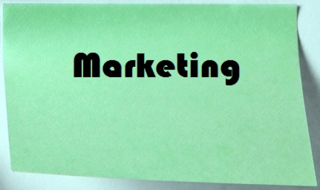 email you send out can include an unobstrusive ad for your books. Simply utilize your email signature as a promotion. After all, you probably email a number of people beyond friends and family; some of the recipients of your emails may never have heard of your books yet might be interested in them.
email you send out can include an unobstrusive ad for your books. Simply utilize your email signature as a promotion. After all, you probably email a number of people beyond friends and family; some of the recipients of your emails may never have heard of your books yet might be interested in them.
Rather than write your job position or phone number, instead write a promo for your book that is just a few sentences long, such as “NOW AVAILABLE! ‘7 Minutes a Day to...’ Quick Practical Guidebooks to Writing, Self-Publishing and Promoting Your Book, by award-winning author and editor Rob Bignell.” Place the text in boldface and include a link to where readers can purchase your books. Include a thumbnail of the book covers (I include a collage of four of my books’ covers).
If possible, do the same with your signature on message boards you participate in. Be sure to check your boards’ policies first, however; some boards prohibit this as an advertisement.
Need an editor? Having your book, business document or academic paper proofread or edited before submitting it can prove invaluable. In an economic climate where you face heavy competition, your writing needs a second eye to give you the edge. Whether you come from a big city like Arlington, Texas, or a small town like Bantam, Connecticut, I can provide that second eye.
<A HREF="http://ws-na.amazon-adsystem.com/widg... Widgets</A>Related articles
 Q&A with Inventing Reality Editor Rob Bignell
Q&A with Inventing Reality Editor Rob Bignell Does your book cover design matter for ebooks?
Does your book cover design matter for ebooks? Second 'Hittin' the trail' guidebook released
Second 'Hittin' the trail' guidebook released Reviewer gives editor's novel positive review
Reviewer gives editor's novel positive review
July 3, 2014
Getting rid of a line of dots that won’t go away
Sometimes when 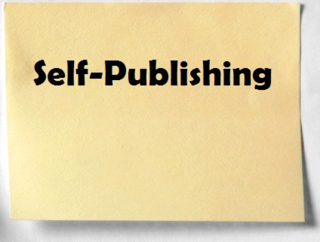 typing or formatting a manuscript in Microsoft Word, to indicate a change of scenes, you might center a group of three to five asterisks between paragraphs. Then you hit return.
typing or formatting a manuscript in Microsoft Word, to indicate a change of scenes, you might center a group of three to five asterisks between paragraphs. Then you hit return.
And the darndest thing happens: The asterisks turn to a whole line of them, and no matter what you do – highlight and delete them, cut and paste them to Notepad then cut and paste that back to Word – you can’t seem to delete the line. Even if you succeed in getting them off the screen, as soon as you hit return again at the end of the next paragraph, they come back!
Well, there is a way to get rid of them.
The problem is that hitting return after certain characters, such as asterisks, results in a border being created. Don’t ask me why anyone would design their software to do that.
The solution then is to delete a border by:
>>Place your cursor at the end of the paragraph before the line of asterisks/dots/rule.
>>Under the Home tab, in the Paragraph section, look in the lower right hand corner for an icon that appears to be a square divided into four. Click the pulldown menu next to it and hit “Borders and Shading.”
>>A pop-up window will appear. Make the sure the tab atop the pop-up is on “Borders.”
>>On the same pop-up window, under “Setting,” click “None” then click “OK.” The rule should disappear.
To avoid running into this problem again, hit return twice where the break between scenes should occur and then begin typing the next paragraph. Move your cursor back to the empty line and place the centered asterisks. Don’t hit return but move the cursor to where you left off with the last paragraph.
Need an editor? Having your book, business document or academic paper proofread or edited before submitting it can prove invaluable. In an economic climate where you face heavy competition, your writing needs a second eye to give you the edge. I can provide that second eye.
<A HREF="http://ws-na.amazon-adsystem.com/widg... Widgets</A>
Related articles
 How to use Track Changes on your manuscript
How to use Track Changes on your manuscript Getting rid of a line of dots that won't go away
Getting rid of a line of dots that won't go away Getting started with formatting your ebook
Getting started with formatting your ebook How to link your ebook's table of contents
How to link your ebook's table of contents How to format line spacing for an ebook
How to format line spacing for an ebook
July 2, 2014
Heart of the matter: Core vs. corps
Be careful 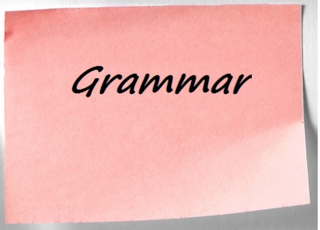 of confusing core and corps, because they’re fighting words.
of confusing core and corps, because they’re fighting words.
Core refers to the center or innermost part of something, such as an apple core or a computer core.
Corps, however, refers to a group of people, especially a subdivision in the military, as in the Marine Corps or the 5th Army Corps.
Given this, a specific corps could be the core of the military but not the other way around!
Need an editor? Having your book, business document or academic paper proofread or edited before submitting it can prove invaluable. In an economic climate where you face heavy competition, your writing needs a second eye to give you the edge. Whether you live in California’s urban Inland Empire or Colorado’s rural town of Empire, I can provide that second eye.
Related articles
 Getting to the core: Amid vs. amidst
Getting to the core: Amid vs. amidst Heart of the matter: Core vs. corps
Heart of the matter: Core vs. corps How to get rid of Word's proofreading marks
How to get rid of Word's proofreading marks
Getting rid of a line of dots that won’t go away
Sometimes when 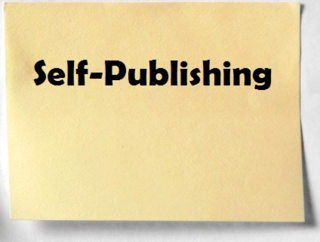 typing or formatting a manuscript in Microsoft Word, to indicate a change of scenes, you might center a group of three to five asterisks between paragraphs. Then you hit return.
typing or formatting a manuscript in Microsoft Word, to indicate a change of scenes, you might center a group of three to five asterisks between paragraphs. Then you hit return.
And the darndest thing happens: The asterisks turn to a whole line of them, and no matter what you do – highlight and delete them, cut and paste them to Notepad then cut and paste that back to Word – you can’t seem to delete the line. Even if you succeed in getting them off the screen, as soon as you hit return again at the end of the next paragraph, they come back!
Well, there is a way to get rid of them.
The problem is that hitting return after certain characters, such as asterisks, results in a border being created. Don’t ask me why anyone would design their software to do that.
The solution then is to delete a border by:
>>Place your cursor at the end of the paragraph before the line of asterisks/dots/rule.
>>Under the Home tab, in the Paragraph section, look in the lower right hand corner for an icon that appears to be a square divided into four. Click the pulldown menu next to it and hit “Borders and Shading.”
>>A pop-up window will appear. Make the sure the tab atop the pop-up is on “Borders.”
>>On the same pop-up window, under “Setting,” click “None” then click “OK.” The rule should disappear.
To avoid running into this problem again, hit return twice where the break between scenes should occur and then begin typing the next paragraph. Move your cursor back to the empty line and place the centered asterisks. Don’t hit return but move the cursor to where you left off with the last paragraph.
Need an editor? Having your book, business document or academic paper proofread or edited before submitting it can prove invaluable. In an economic climate where you face heavy competition, your writing needs a second eye to give you the edge. Whether you come from a big city like Boston, Massachusetts, or a small town like Boston, Missouri, I can provide that second eye.
<A HREF="http://ws-na.amazon-adsystem.com/widg... Widgets</A>
Related articles
 How to use Track Changes on your manuscript
How to use Track Changes on your manuscript Fixing tab errors when formatting an ebook
Fixing tab errors when formatting an ebook How to link your ebook's table of contents
How to link your ebook's table of contents How to format line spacing for an ebook
How to format line spacing for an ebook
July 1, 2014
Ensure descriptive details aren’t just chrome
Descriptive scenes 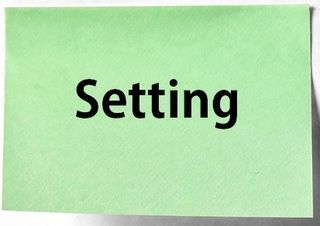 of places, characters or the time period in stories ought to be relevant to the plot. Such scenes should provide details that molds the reader’s understanding of the character and of the setting.
of places, characters or the time period in stories ought to be relevant to the plot. Such scenes should provide details that molds the reader’s understanding of the character and of the setting.
Consider the following paragraph:
Peter rolled his eyes but began his descent. Upon reaching the ground, his father handed him a handkerchief. It did little good. Red granules of prairie loam whirled upon the wind like thick swarms of gnats. As the old man blinked slowly, Peter searched for a hint of anticipation in that vacant face, saw only a thick line drooping beneath zombie eyes and skin damp from the swelter.
The details in this paragraph help establish the hot, dirty environment the characters are in and the fatigue of Peter’s father. The heat presumably led to this tiredness. During the scenes ahead, the fatigue should play some role in the plot – perhaps the father makes an error resulting from his tiredness that is a major plot point. So also should the gritty environment; perhaps Peter later is embarrassed when he meets an attractive woman because he is dirty.
If the fatigue, heat and dirtiness of the scene are irrelevant to the plot, then those details can be considered chrome, a term coined by Cambridge Science Fiction Workshop’s David Alexander Smith. Chrome ought to be deleted from the story.
A related term to describe interesting but irrelevant descriptive details is “more ink around the dogs,” an expression from CSFW’s Sari Bowen in reference to a poorly written story in which the only interesting part of the tale was the description of the dogs.
Need an editor? Having your book, business document or academic paper proofread or edited before submitting it can prove invaluable. In an economic climate where you face heavy competition, your writing needs a second eye to give you the edge. I can provide that second eye.
<A HREF="http://ws-na.amazon-adsystem.com/widg... Widgets</A>Related articles
 Work off the fat from overwritten descriptions
Work off the fat from overwritten descriptions Shun beautiful writing done for beauty's sake
Shun beautiful writing done for beauty's sake What is a 'blood and guts' scene?
What is a 'blood and guts' scene?
June 30, 2014
Former colleague publishes her first book
A former  journalism colleague, Tara Meissner, has published her first book, "Stress Fracture: A Memoir of Psychosis." This psychology memoir offers a raw view a 33-year-old wife and mother swallowed by psychosis. The psychotic episode includes meeting Jesus Christ, dancing with Ellen DeGeneres, and narrowly escaping eternity in the underworld. Left scarred and damaged, health returned allowing her to tentatively embrace a grace and peace earned through acceptance of bipolar disorder. The book reached the Top 50 on two Amazon.com bestsellers lists and is available for purchase online.
journalism colleague, Tara Meissner, has published her first book, "Stress Fracture: A Memoir of Psychosis." This psychology memoir offers a raw view a 33-year-old wife and mother swallowed by psychosis. The psychotic episode includes meeting Jesus Christ, dancing with Ellen DeGeneres, and narrowly escaping eternity in the underworld. Left scarred and damaged, health returned allowing her to tentatively embrace a grace and peace earned through acceptance of bipolar disorder. The book reached the Top 50 on two Amazon.com bestsellers lists and is available for purchase online.
Need an editor? Having your book, business document or academic paper proofread or edited before submitting it can prove invaluable. In an economic climate where you face heavy competition, your writing needs a second eye to give you the edge. Whether you live in a big city like Houston, Texas, or a small town like Houston, Delaware, I can provide that second eye.
<A HREF="http://ws-na.amazon-adsystem.com/widg... Widgets</A>Related articles
 Editing client releases adopting orphans memoir
Editing client releases adopting orphans memoir Download editor's self-publishing book free
Download editor's self-publishing book free Where to find reviewers for your book
Where to find reviewers for your book



